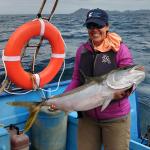
The Gulf of California Marine Endowment - a public-private partnership to sustainably finance Marine Protected Areas
Mexico’s progress towards meeting the Aichi Targets includes the expansion of the protected area system. Unfortunately, the budget of the National Commission for Protected Areas (CONANP) is not keeping pace, resulting in chronically underfunded protected areas. Thus, supplementary funding from private, bilateral and multilateral donors is crucial for their effective operation. In order to address lacking financial resources and to ensure long-term sustained funding, the Mexican Fund for the Conservation of Nature (FMCN) and CONANP created the Fund for Protected Areas to support the management of 29 federal protected areas. Based on this experience, FMCN created the Gulf of California Marine Endowment (GCME) in 2007 with the goal of contributing long-term conservation of the marine protected areas (MPAs) in the Gulf of California. The GCME currently has a capital of US$9.5 million and a fundraising target of US$30 million.
Context
Challenges addressed
- Sufficient, flexible and timely funding for the operation of coastal and marine protected areas
- The need for cross-sector collaboration to integrate participatory fisheries management with protected area management
- Surveillance and enforcement in marine protected areas
- Adaptation to climate change for fisheries and coastal communities
Location
Process
Summary of the process
An effective private trust fund manager is indispensable for a sustainable financing solution based on trust fund revenue (building block 1). In order to operate, the trust fund manager must be well coordinated with the public agencies responsible for the implementation of conservation and management actions on the ground and must have the capacity to bring the all the actors to the table (building block 2). The mechanism must have the capacity and flexibility to adapt to changing conditions.
Building Blocks
Flexible and transparent administration of funds
Since Mexican regulations prevent CONANP from receiving private donations directly, FMCN channels funding to the management of each protected area through local organizations and accompanies with strict financial controls and experienced and well-trained staff. This public-private collaboration mechanism ensures that funds are applied transparently and helps enhance civil society participation in MPA management.
Enabling factors
- A non-governmental institution with a solid governance structure
- The capacity of the institution to raise trust fund donations from multilateral, bilateral and private donors
- Donors willing to invest in conservation trust funds
- A Finance Committee of pro bono financial experts to supervise the management of the trust fund to ensure that it maximizes returns while managing risk
- An experienced, professional trust fund manager
Lesson learned
The rules governing the operation of the trust fund must have sufficient flexibility to adapt to changing conditions, for example changing levels of public funding for protected areas in the federal budget. The trust fund should also have the flexibility to reallocate funding to priority activities and sites.
Resources
Public-private partnership for MPA financing
FMCN and CONANP collaborate in a public-private partnership, the Gulf of California Marine Endowment (GCME). This is formalized in a cooperation agreement detailing the role and responsibilities of the partners. FMCN is responsible for the management of the financial resources and CONANP ensures that these resources are used in strategic conservation activities.
Enabling factors
- A national government that actively supports the private-public trust fund mechanism for marine management
- Good working relationships with public officials in the federal agencies
- Building trust over time
Lesson learned
Cross-sectorial collaboration is indispensable for effective marine protected area management. Initially the Gulf of California Marine Endowment focused on supporting and collaboration with CONANP but we realized that active collaboration with other federal agencies, state and municipal level authorities and fisher associations is necessary for success in the field.
Impacts
FMCN has collaborated closely with CONANP in consolidating protected areas network in México through this highly successful mechanism for 20 years. The GCME has five main goals:
- Expand the marine protection network by creating new MPA and increase management effectiveness;
- Improve fisheries management through participatory cross-sector collaboration;
- Increase enforcement in protected areas;
- Strengthen civil society capacities; and
- Foster sustainable coastal development.
The GCME revenue has enabled the protected area staff to triple the number of marine patrols and reduce illegal fishing. Without the support from the trust fund, CONANP would not have the resources or flexibility to address fisheries management challenges.
Beneficiaries
- Fishers
- Coastal communities
- National Commission for Protected Areas (CONANP)
- National economy
Sustainable Development Goals
Story
Bahía de Los Ángeles canales de Ballenas y de Salsipuedes Biosphere Reserve and Archipiélago de San Lorenzo National Park are marine protected areas (MPA) located in the Mid Riff Islands region of the Gulf of California. Four foundations donated a USD2.5 million trust fund for the management of the MPAs. The trust fund revenue has enabled the protected area staff to triple the number of marine patrols and reduce illegal fishing. It has also permitted the protected area to hire a staff member to work with local fishers, the primary users of the protected area. Without the support from the trust fund, Conanp would not have the resources or flexibility to address fisheries management challenges. Because the area is so remote and the procedures for obtaining fishing permits so onerous, most traditional fishers in the region fish without permits and therefore have limited ability to negotiate with middle-men who take their products to markets. Thanks to the support from the Conanp staff hired by the trust fund, traditional fishers are finally obtaining fishing permits which gives them rights over their resources and great incentives to protect them.




